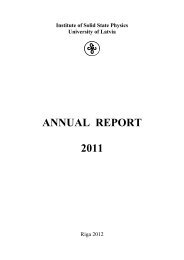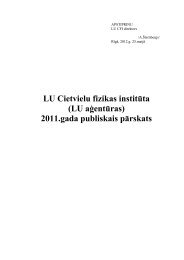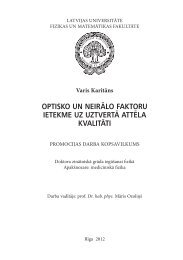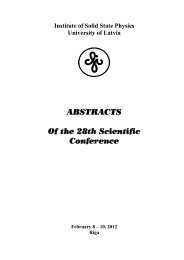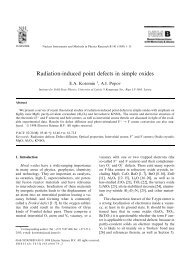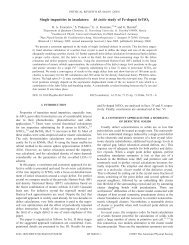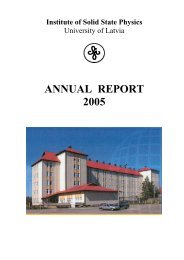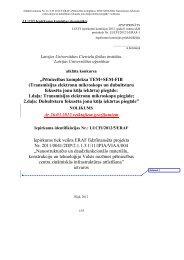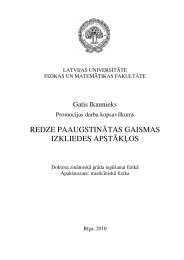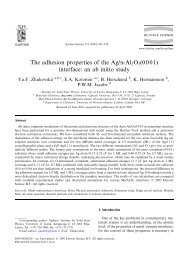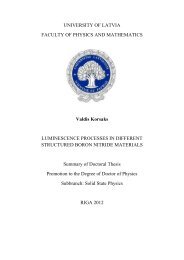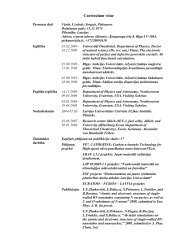Annual Report 2012 - Latvijas Universitātes Cietvielu fizikas institūts
Annual Report 2012 - Latvijas Universitātes Cietvielu fizikas institūts
Annual Report 2012 - Latvijas Universitātes Cietvielu fizikas institūts
Create successful ePaper yourself
Turn your PDF publications into a flip-book with our unique Google optimized e-Paper software.
Fig.1. Left panel: Schematic view of the nearest-neighbor relaxation around nickel vacancy in<br />
the bulk of nickel oxide according to our molecular dynamics simulations. Note that oxygen<br />
atoms move outwards, but nickel atoms move inwards to the nickel vacancy. Right panel:<br />
Comparison of the experimental (solid lines) and configuration-averaged (dashed lines) Ni K-<br />
edge EXAFS spectra χ(k)k 2 for nano-NiO and tf-NiO.<br />
Within the MD-EXAFS method, the force-field potential models have been developed<br />
for nanosized NiO using as a criterion the agreement between the experimental and<br />
theoretical EXAFS spectra. The best solutions have been obtained for the 3D cubicshaped<br />
nanoparticle models with nonzero Ni vacancy concentration C vac : C vac ≈ 0.4–<br />
1.2% for NiO nanoparticles having the cube size of L ≈ 3.6–4.2 nm and C vac ≈ 1.6–2.0%<br />
for NiO thin film composed of cubic nanograins with a size of L ≈ 1.3–2.1 nm. Thus our<br />
results show that the Ni vacancies in nanosized NiO play important role in its atomic<br />
structure relaxation along with the size reduction effect.<br />
133



